2 February 2017
Banded iron formation in Barberton Mountain Land
Posted by Callan Bentley
Today, let’s return to the Barberton Greenstone Belt in Barberton Mountain Land, South Africa. I visited there in late August of last year, and documented some of the extraordinary Archean rocks exposed in that place. The Barberton GeoTrail on the road called R40, which runs from Barberton to the Swaziland border is a great place to introduce yourself to some of the varieties of rocks that can be found here.
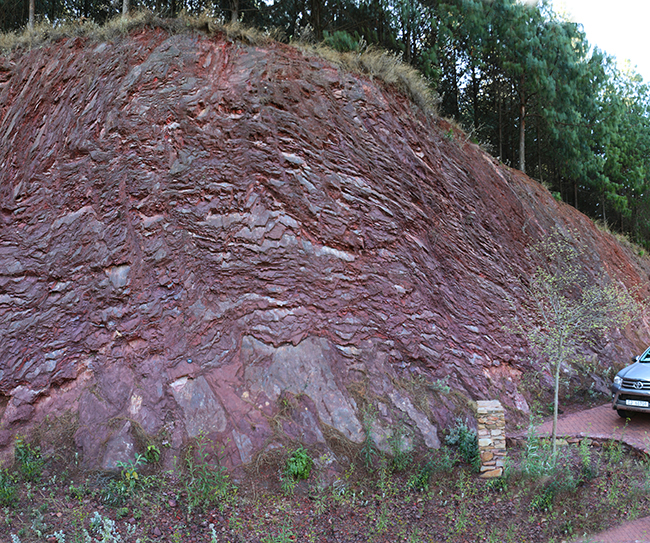
One lovely unit is this banded iron formation.

(There’s a pretty big difference in the vibrancy of the red depending on whether the sun was shining or not.)
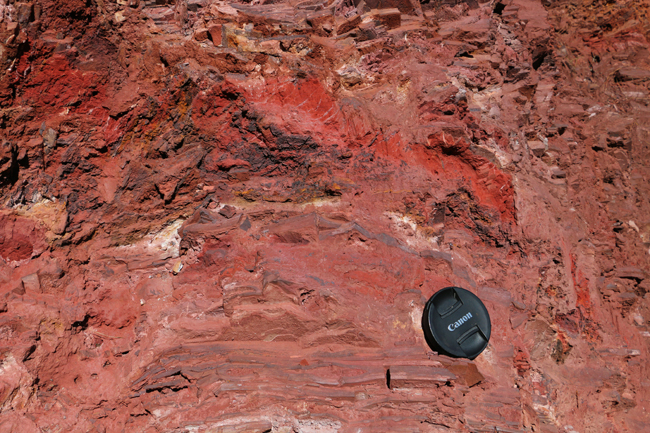
Banded iron formation is a rock type that no longer forms on planet Earth. To get hematite and magnetite to precipitate onto the ocean floor, you first need to have iron dissolved in the seawater. This is hard to do if you have free oxygen in any quantity, the iron will react with the oxygen and precipitate out. So BIF is in fact a rock that records the local oxidation of iron, but that implies more or less global absence of oxygen, for the iron to be in solution in this quantity in the first place.
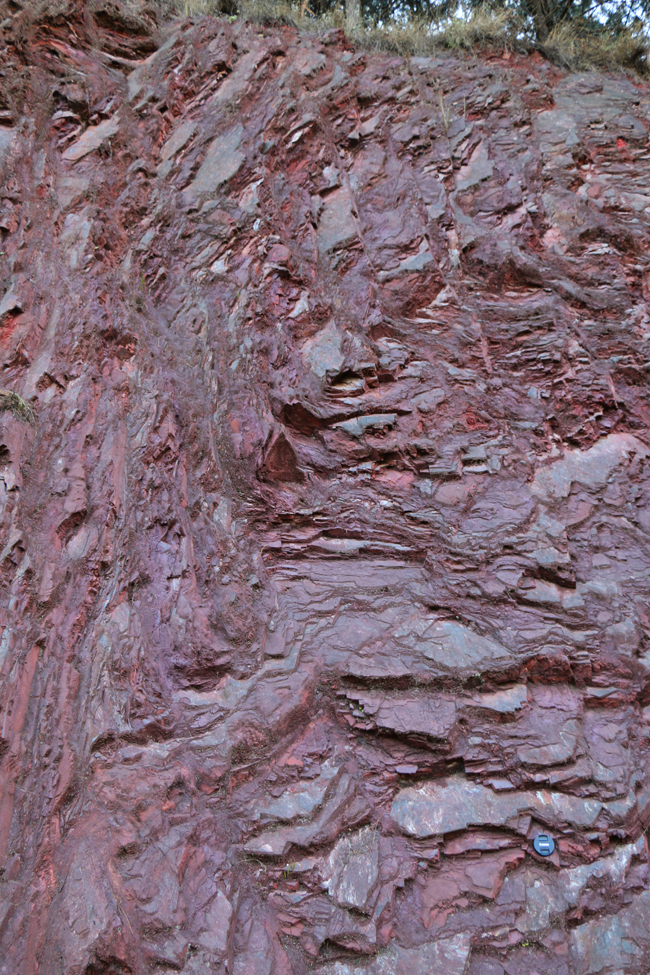
So BIF is evidence of a different ocean chemistry than what we have today, and that implies a different atmospheric chemistry than we have today. Like komatiite, it’s an “extinct rock” on our planet, evidence of a radically unfamiliar planet’s primordial operations.

The particular outcrop that’s “the BIF stop” on the Barberton GeoTrail also features some pronounced folding, which may represent soft sediment deformation. Here are few examples:
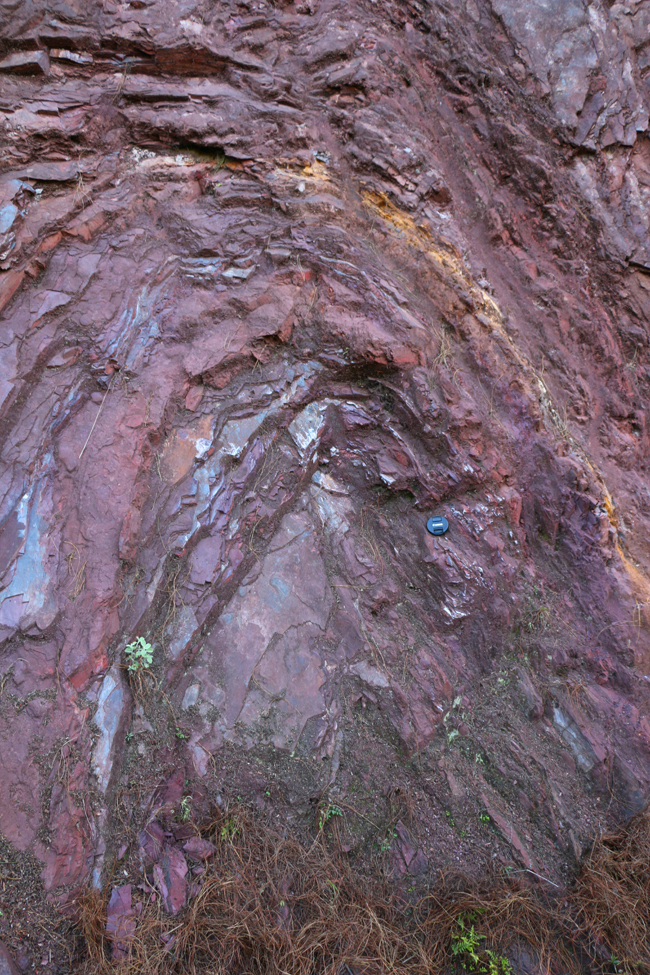



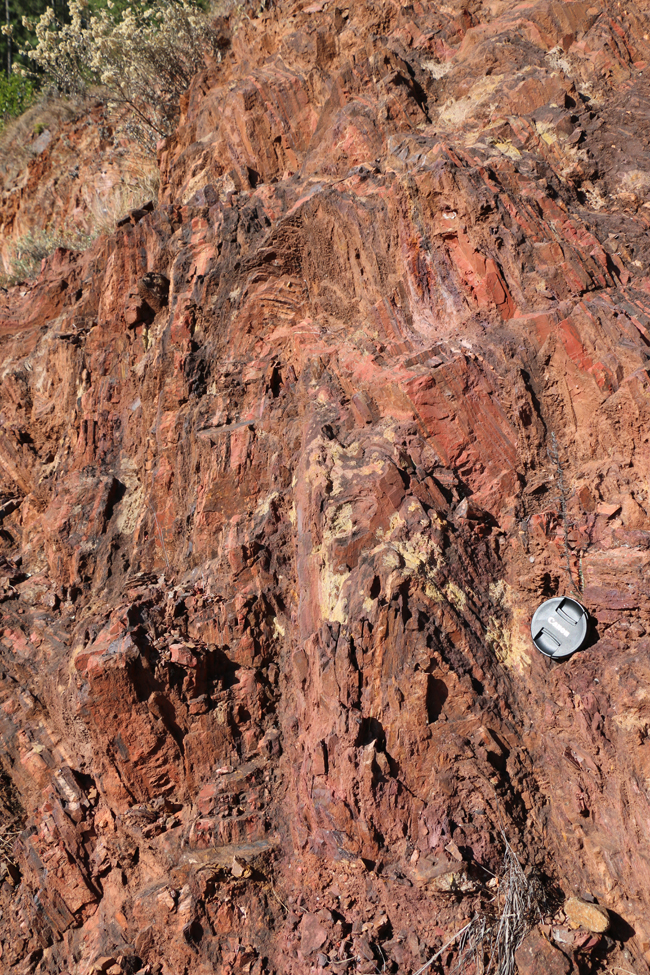
Here are two GIGAmacro looks at the front and back of a sample of BIF I collected in Barberton. You’ll need Flash to view these here; otherwise click through to see a non-Flash-based version of the image. Compare the layers of hematite to the layers of chert and jasper for yourself:
Link 0.52 Gpx GIGAmacro by Callan Bentley
Link 0.63 Gpx GIGAmacro by Callan Bentley


 Callan Bentley is Associate Professor of Geology at Piedmont Virginia Community College in Charlottesville, Virginia. He is a Fellow of the Geological Society of America. For his work on this blog, the National Association of Geoscience Teachers recognized him with the James Shea Award. He has also won the Outstanding Faculty Award from the State Council on Higher Education in Virginia, and the Biggs Award for Excellence in Geoscience Teaching from the Geoscience Education Division of the Geological Society of America. In previous years, Callan served as a contributing editor at EARTH magazine, President of the Geological Society of Washington and President the Geo2YC division of NAGT.
Callan Bentley is Associate Professor of Geology at Piedmont Virginia Community College in Charlottesville, Virginia. He is a Fellow of the Geological Society of America. For his work on this blog, the National Association of Geoscience Teachers recognized him with the James Shea Award. He has also won the Outstanding Faculty Award from the State Council on Higher Education in Virginia, and the Biggs Award for Excellence in Geoscience Teaching from the Geoscience Education Division of the Geological Society of America. In previous years, Callan served as a contributing editor at EARTH magazine, President of the Geological Society of Washington and President the Geo2YC division of NAGT.